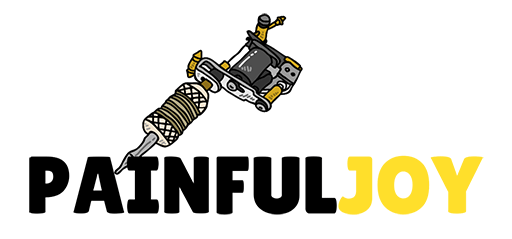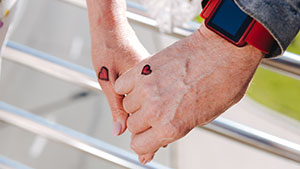The process of getting a tattoo creates an open wound on the skin that should heal pretty quickly. The punctures to set the ink on the dermis are 1.1 millimeters deep and therefore they are shallow and should heal pretty fast.
By learning the stages of healing, and the normal amount of time it takes for these types of wounds to heal you can be prepared and able to notice any signs of a problem.
How Long Does It Take for a Tattoo to Heal
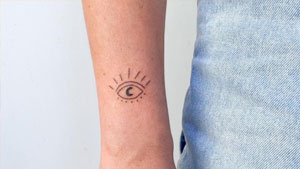
Your body will need a month to completely heal from a tattoo procedure. In the first two weeks, you will experience the most soreness and open wound symptoms. In the last two weeks, your outer skin is usually healed but deeper layers are still healing and the itching you experience may be greatly increased at this time.
You must take care of the area because you have an open wound that has to heal. If you do not feel that the area is healing properly then seek advice from a professional to rule out severe complications like infection.
Tattoo Healing Stages
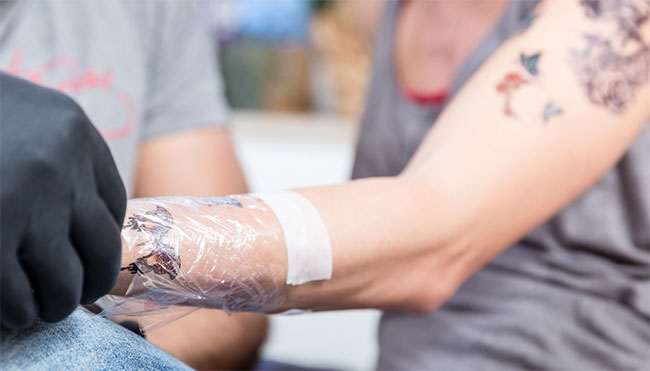
Stage One
This period is the first 6 days after you get the tattoo. During this time, it is normal to see oozing, swelling, redness, soreness, and possibly some scabbing. The symptoms should improve each day.
Stage Two
This is the 7th to the 14th day after the tattoo. You will notice that the oozing has subsided. If it is still oozing then seek professional advice.
The redness will be minimized or completely gone by this time. You should also be aware of less swelling and puffiness.
You may notice an increased itching on and around the area. This is a sign that your skin is healing and you need to resist scratching the area. Your fingernails can break the skin and introduce infection. Instead of scratching gently rub or pat the area. Antihistamines may help to relieve the itch if it is unbearable.
The skin may be starting to peel or flake away. Let this happen naturally and do not pick at the skin or pull the loose skin away.
Stage Three
This stage occurs from the 15th day to the 30th day. During this time the outer layers of skin have healed but the deeper tissue is still healing. It is not uncommon for the ink to look cloudy or slightly distorted during this stage. Continue to follow the regimen of cleaning and light ointment applications. Drink plenty of water to make sure your skin stays hydrated and protect the new skin area from exposure to high heat or the sun’s UV rays.
How to Make a Tattoo Heal Faster?
Once you have a tattoo then you want to heal the area as quickly as possible so you can show off your new ink. There are several things that you can do to make this area heal faster and more completely.
Let it breathe
When you remove the first bandage that was put on the tattoo by the artist do not cover it back up with another bandage. The bandage will stop the area from getting the air it needs to heal. Beneath a bandage, too much moisture can accumulate and cause the healing process to be delayed.
Luke Warm Water Never Hot
When you clean the area make sure that you use Luke warm water and not hot water. Very hot water can create a burn on the area. You are cleaning an open wound, and that means the skin is sensitive to hot and cold.
Do NOT use too much ointment
After a tattoo, you are going to be advised to use an ointment like A&D ointment to promote healing. You are supposed to wash the tattoo and then apply the ointment.
If you apply too much ointment the area will stay too moist and not be able to heal. Apply a very thin layer of ointment.
Do not use petroleum jelly like Vaseline as the ointment because petroleum jelly can cause the ink in the tattoo to fade.
Use non-scented soaps and lotions
The ingredients used to create fragrances can cause a reaction on the wound that slows the healing process.
Resist the Urge to Scratch
A healing tattoo will itch but you have to resist the urge to scratch. You can pat the area by slapping it with the palm of your hand, but do NOT scratch.
Take Showers not Baths
You want to avoid soaking the area until it has had time to heal. Take a shower instead of a bath so you do not soak the wounded area.
After the initial two weeks of healing start wearing sunscreen
Do not apply sunscreen for the first two weeks, but after that time make sure you protect the skin from the sun’s harmful rays. This area is new skin that will be easier to burn than your other skin.
Signs Your Tattoo Isn’t Healing Properly
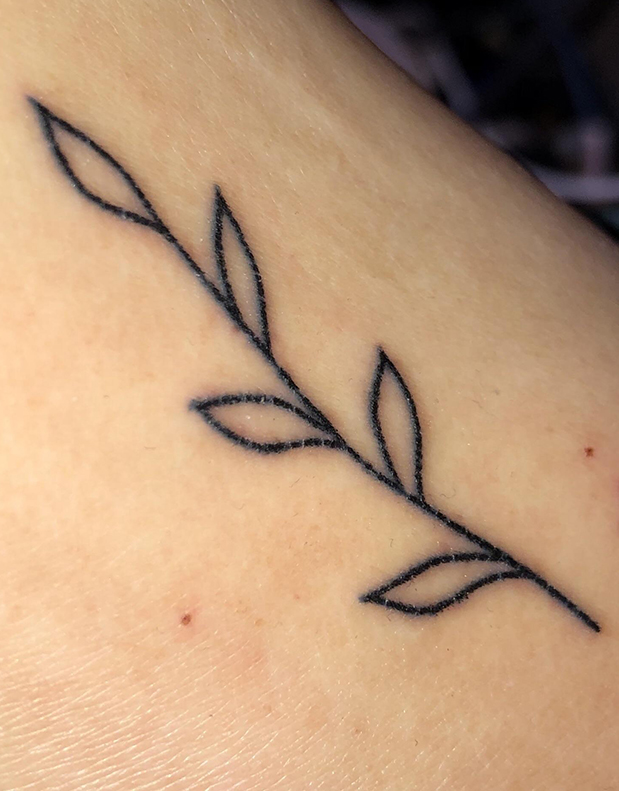
If you have recently gotten a tattoo then you should be aware of the signs and symptoms of a tattoo that is not healing as it should. A tattoo is basically an invasive procedure that creates a wound on your skin. You must care for that wound, and watch out for signs that you are not healing as you should.
Sometimes you do not heal properly because the equipment used to create the tattoo was not properly sterilized, or you are having an allergic reaction, or you have a health condition such as diabetes that slows the healing process.
Indicators that your tattoo is not healing properly include:
- Oozing and redness that does not subside in a short amount of time. Oozing and redness are normal after these procedures but they should subside in a week or less.
- Severe itching that does not subside in a few days
- Swelling that does not subside in a few days
- Red streaks radiating from the tattoo
- Pus, foul odors, or other signs of infection
- Blistering like water blisters
- Excessive bleeding
If you have any signs or indications that the tattoo is not healing you are encouraged to call your tattoo specialist or your doctor to have the area looked at by a professional. Often the early signs of delayed healing can allow you to use a minor treatment to advance the process.
Related Article:
How long do stick and poke tattoos last
How long for temporary tattoo last
Conclusion
Tattoos are beautiful expressions of individuality. Tattoos are basically safe to get and easy to care for. You must pay attention to the tattoo for the first few days or weeks to make sure that it heals correctly and to protect it from things that can damage it or slow the healing process.
